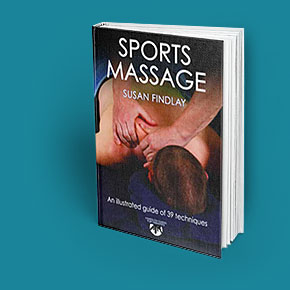Goal setting is something we are taught in our massage courses for a couple of reasons. Firstly in order to establish goals for our clients, and then hopefully when you put together your business plan. You have probably thought about doing it in one form or another, but maybe it has not become a regular practice. On the other hand, perhaps you are skeptical about goal setting, not sure that writing something out can actually help you attain it? I hope that by the end of this article you will understand its value and test it out to see what it can do for you.
There are a significant number of scientific studies that demonstrate that goal setting is a very effective method of laying out what it is we want from life, and then systematically achieve it by following a number of steps.
For example, a study done by Harvard University examined two distinct groups of people. ‘The low achievement group, when asked to set goals and perform the same task, achieved significantly higher performance and success rates, coupled with higher levels of motivation, drive and happiness.[1]‘
Hundreds of research studies have been done like the one at Harvard, and they have all proved the same conclusion: that goal setting increases significantly the success rate, in any area of life in which it is applied – this means – business, family, mental, physical, financial, spiritual, social etc. You might want to set goals for all areas of your life, thereby sustaining a more balanced way of life.
With that being said, before setting goals, it’s important to realise that the way in which you set them is a skill in itself. Unless you know how to effectively set them, they will be pointless.
There are, in fact, specific ways to go about setting, and thus achieving, your goals. One method that is widely used is the setting of S.M.A.R.T goals. This translates to Smart, Measurable, Actionable, Realistic and Timely. I am sure you are familiar with this term as a massage therapist, as it is a common form of goal setting we use with our clients. The first time this term was known to be applied was in 1981, in an article written by George T. Doran[2]it offers some clarity about effective guidelines.
S.M.A.R.T. is fairly clear in terms of what it is that your goals will need to encapsulate, however there are a few other tips that I would give alongside S.M.A.R.T that may help keep you enthusiastic and accountable as far as your future goals are concerned. These are:
 Make your goals visible
Make your goals visible
The act of visibly seeing your goals written down is key, but choosing how you do this can either be a joyful event or a laborious task. I am from the old school, doing something that requires my senses such as touching or being able to visually look at the end product is very important in driving me forward and keeping my motivation topped up. So to ensure I remain engaged with my objectives, I choose something that is visually striking. For me, I use post it notes, there are a variety of colours, shapes, sizes that make my planning creative and efficient. It also helps to unlock the fun factor which unleashes my inner child. Taking the time to do this, using a method that, unless you work with children, is not something you would do regularly, unlocks a part of your brain that allows you to see things in a different way to your usual, rational outlook. This can be very helpful when harnessing new ideas – helping you achieve things in a way that is different to normal.
When finished, make sure the goals stay visible. Don’t be tempted to put them in a draw, or somewhere where you will not see them every day. It is important to be reminded of your goals, and having them in bright colours in an obvious place will ensure you check in regularly to see if you are really doing everything possible to achieve them. I use a paper diary, dividing it into sections that represent areas of my life, and because I use this diary daily I also revisit my goals regularly.
 Understanding your goals and eliciting an emotional response towards them
Understanding your goals and eliciting an emotional response towards them
One of the most effective ways of achieving your goals is to really know how you will feel once you have realised them. The most efficient way of doing this is to not just write down the goal itself, but to try and write a few paragraphs on why you want to achieve said goal. How you will go about doing so, and most importantly how you will feel once you have put the work in and achieved them. By writing this emotional response down, you are allowing yourself to really feel the end result. I know some of you will be thinking this feels like it would be very taxing on your time, or maybe you are not the writer type, and to be fair, although the research shows that this is the best way, I tend to talk about it with my partner, or out loud in the privacy of my forest walks, only my dog is privy to my ramblings.
Whichever way you choose, it is important that the reason for you doing this is fully explained and understood by you, thus giving you the confidence and belief to start implementing your plans. Understanding the ‘why’ behind your goal is an extremely important part of the process, and it will require you to delve a little deeper into why you want to achieve your goals. Only when you truly understand the ‘why’, will you be hungry enough to do whatever it takes in order to achieve it.
You need to really understand why you want this so much, how your life will look once you have achieved it and why it is essential to your happiness. Another powerful tip is to imagine how your life will look if, after going through this exercise, you don’t actually achieve these goals and making a note of your emotions towards this outcome.
Take immediate action
Once you have followed the other steps and you have a clear plan about what you want to achieve, take some immediate action. Progress is achieved through consistent improvement and work, and not by one-off gestures. Bear in mind these action steps don’t have to be anything grand. Little steps that you can mark off to make yourself feel like you are making progress is all that’s required here. Your intention should be on regular improvement and consistency.
The best time to start is when it is fresh in your mind and you are emotionally invested, this will kick start your momentum, and hopefully take away any feelings of intimidation about the scale of what it is you are trying to do. Break it down into bite sized chunks and do it a little bit at a time.
Share for accountability
Once you have written down your goals, it is important to share them with people around you. Goals are not dreams and should not be treated as such, they are things that you want, and believe that you can achieve given the right amount of time and investment.
In order to make your goals seem more real, a very effective way of ensuring you have accountability for them is by sharing them with someone close to you. If you would prefer not to share your goals with any one specifically, in order to give these objectives a different level of commitment, it also works just to say the words out loud
I hope these goal setting tips help you focus on what is important to you for the coming year. I’d love to hear some feedback about your goals, and if doing any of the above has helped you achieve your future objectives. I know that I have my list ready for the next few months and I continue to implement them daily. For more goal setting ideas and how to overcome feelings of overwhelm please join me in my Online Massage Coaching program. In the meantime, here’s to a successful and fruitful future for all of us!
- https://medium.com/swlh/5-proven-ways-to-set-goals-and-achieve-them-cf19016b3af1 accessed 27/12/2019 ↑
- Doran, G. T. (1981). “There’s a S.M.A.R.T. way to write management’s goals and objectives”. Management Review. 70 (11): 35–36. ↑

